Discover the enchanting Hon Chen Temple in Hue, Vietnam. Perched on the bank of the Perfume River, this ancient shrine offers stunning views and rich cultural heritage.
Explore its intricate architecture, learn about the worship of the Goddess of the Kingdom, and experience traditional festivals.
List of Contents
1. Overview of Hon Chen Temple

Hon Chen Temple stands as a beacon of faith on the slopes of Ngoc Tran Mountain. The sacred site is a testament to Hue's rich spiritual and cultural heritage. For centuries, the temple has drawn pilgrims and tourists seeking solace and enlightenment.
2. Location and Accessibility
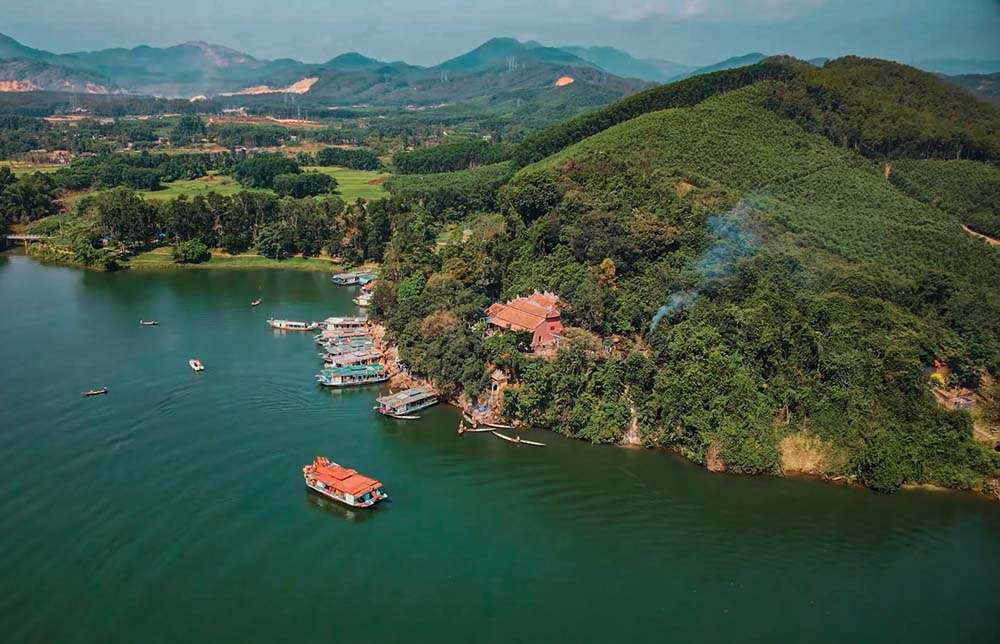
Hon Chen Temple rests on Pearl Bowl Mountain, named for its unique shape. It overlooks the tranquil Perfume River, adding to its mystical allure. The temple is 8 kilometers southwest of Hue's city center, offering seclusion while remaining accessible.
3. History of Hon Chen Temple
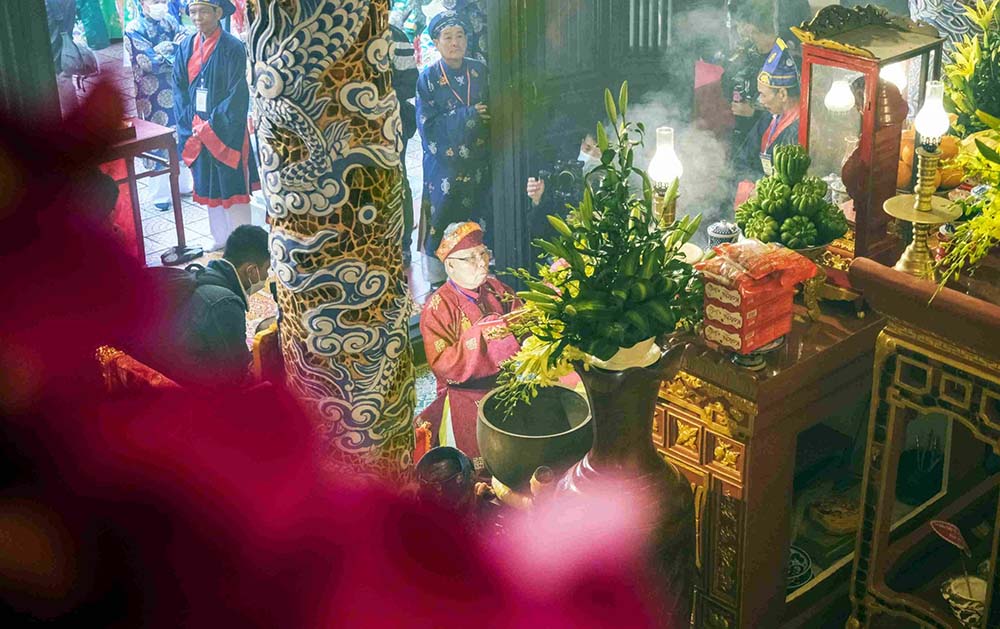
Hon Chen Temple has a rich history rooted in the region's spiritual traditions. Initially built to honor Po Nagar, the goddess of the ancient Cham people, the site later evolved to worship Thien Y A Na, the Mother Goddess.
Emperor Minh Mang renovated the temple in the early 19th century, elevating its status and grandeur. Emperor Dong Khanh later renamed it Hue Nam Temple, signifying its importance in bringing pleasure to the Vietnamese king and realm.
Fascinating legends surround the temple. One tells of Emperor Minh Mang dropping a jade cup into the Perfume River, only to have a turtle return it. Another involves King Thieu Tri's concubine dropping a golden tube, which reappeared after praying to Thien Y A Na.
Key historical events include:
- 1832 and 1834: King Minh Mang repaired and expanded the temple.
- 1954: Princess Lieu Hanh (Van Huong Thanh Mau) began to be worshipped alongside Buddha, Saint Quan Cong, and over 100 other gods.
- 1883-1885: King Dong Khanh prayed to Thien Y A Na at Ngoc Tran Temple to become king.
- 1886: After his enthronement, King Dong Khanh rebuilt and renamed the temple Hue Nam Dien to show gratitude to the Holy Mother.
4. Architectural Significance

Hon Chen Temple's architectural layout and intricate designs reflect its cultural and historical importance. The complex consists of several structures, each with unique significance.
The main ceremonial hall, Minh Kinh Dai, is adorned with elaborate decorations. The right side features the Quan Cu House, Trinh Cat Institute, and Thanh Pagoda. On the left, visitors find the Ngu Vi Thanh Ba Palace, Tiger's Altar, and Am Ngoai Canh.
The riverside shrine, Am Thuy Phu, offers a serene place for reflection by the Perfume River. The extensive use of phoenix images, symbolizing femininity, aligns with the temple's dedication to the Mother Goddess.
The artistic details from the late 19th century showcase the pinnacle of decorative arts, captivating visitors and devotees with their intricate designs.
5. Festivals and Ceremonies

Hon Chen Temple is renowned for its vibrant festivals and ceremonies, particularly the Hon Chen Temple Festival, celebrated twice a year in March and July according to the lunar calendar. This festival vividly displays Hue's cultural and religious heritage.
The captivating “Nghinh Than” ceremony features a grand procession on the Perfume River, with elaborately decorated boats carrying offerings and worshippers. Traditional music fills the air as the river comes alive with a flotilla of dragon boats adorned with colorful flags and lanterns.
The “Chanh Te” ceremony follows, involving traditional activities such as animal releasing, lantern floating, and village worship. These rituals represent the community's respect for nature and ancestors, with lanterns floating gently down the river offering a moment of reflection and connection with the divine.
The “Lên Đồng” ceremony, recognized by UNESCO as an Intangible Cultural Heritage, involves mediums entering a trance-like state to communicate with deities and deliver messages and blessings to devotees. This profound expression of Vietnam's intangible cultural heritage highlights the enduring belief in the supernatural and mystical.
6. Visitor Experience
Visiting Hon Chen Temple offers a blend of cultural immersion and serene reflection, making it a versatile destination for travelers. Whether you seek the vibrant energy of festivals or the tranquility of a quiet visit, Hon Chen Temple provides a unique experience.
6.1. Best Times to Visit Hon Chen Temple
- During the Festivals:
- Visiting Hon Chen Temple during the festivals in March and July (lunar calendar) provides an unparalleled cultural experience. These times are ideal for witnessing traditional ceremonies, vibrant processions, and the rich tapestry of local customs.
- Other Times:
- For those preferring a more peaceful visit, non-festival times are perfect. The temple grounds offer a serene atmosphere, ideal for reflection and quiet exploration.
6.2. Activities for Visitors
- Taking Photos:
- Photography is encouraged outside the temple, allowing visitors to capture the scenic beauty of the temple's surroundings and the stunning views of the Perfume River.
- Listening to Local Legends and Myths:
- Engaging with local guides or participating in guided tours can provide fascinating insights into the legends and myths associated with Hon Chen Temple. Stories of deities, emperors, and miraculous events enrich the visitor experience.
6.3. Travel Tips
- Dress Modestly:
- Due to the sacred nature of the temple, it is essential to dress modestly. This shows respect for the religious site and aligns with local customs.
- Maintain Cleanliness and Refrain from Loud Behavior:
- Visitors should keep the temple grounds clean and avoid making loud noises. This helps preserve the temple's tranquil atmosphere and shows respect for other visitors and worshippers.
- Avoid Throwing Paper Offerings into the River:
- While it is common in some cultures to throw paper offerings into the river, visitors are encouraged to refrain from this practice to protect the environment and maintain the cleanliness of the Perfume River.
7. How to get to Hon Chen Temple
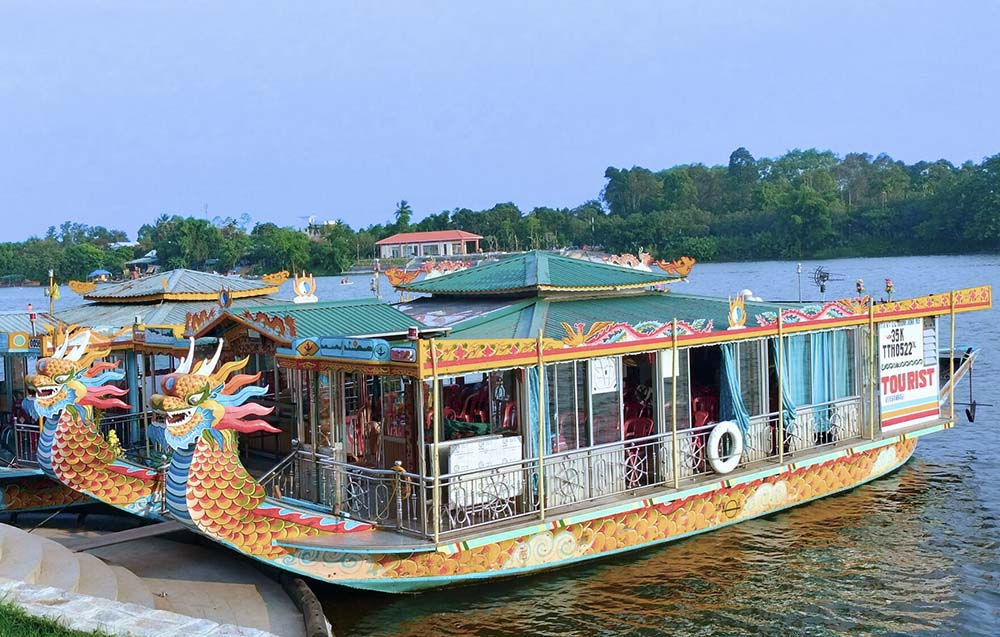
Visitors can reach Hon Chen Temple in several ways, each providing a unique perspective:
- Dragon Boat on the Perfume River: A dragon boat ride along the river allows visitors to absorb the scenic beauty of Hue's landscape. The gentle flow of the water provides a serene backdrop to the journey.
- Road via Bui Thi Xuan Street and Huyen Tran Cong Chua Street: Driving from Hue city center via these streets offers glimpses of local life and lush greenery. The route is straightforward and highlights the region's charm.
- Thien Mu Pagoda via Van Thanh Road and Long Ho Road: From the historic Thien Mu Pagoda, travelers can enjoy a scenic drive that showcases the area's natural beauty and historical significance. This route follows Van Thanh Road and Long Ho Road.
When visiting Hon Chen Temple, dress modestly to respect the sacred atmosphere and avoid loud noises to maintain tranquility. Keep the surroundings clean to preserve its beauty for future visitors.
Using a map for navigation can enhance your travel experience and ensure you don't miss any significant landmarks along the way.
Read more: How to Get Around in Hue
8. Conclusion
Hon Chen Temple is a destination that offers a rich blend of history, culture, and spirituality. Whether attending the vibrant festivals or seeking a quiet moment of reflection, visitors can immerse themselves in the unique atmosphere of this sacred site.
By following local customs and respecting the temple's sanctity, travelers can fully appreciate the profound cultural heritage that Hon Chen Temple represents. This timeless landmark continues to captivate the hearts of those who visit, leaving them with lasting memories of its spiritual and cultural significance.
As you plan your journey, don't miss our detailed Hue Travel Guide for all the information you need. Also, explore our extensive list of Things to do in Hue to ensure you make the most of your trip.



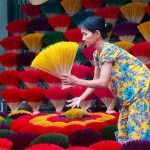
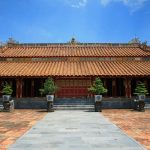


Good V I should certainly pronounce, impressed with your website. I had no trouble navigating through all the tabs and related info ended up being truly simple to do to access. I recently found what I hoped for before you know it at all. Quite unusual. Is likely to appreciate it for those who add forums or something, website theme . a tones way for your client to communicate. Nice task..